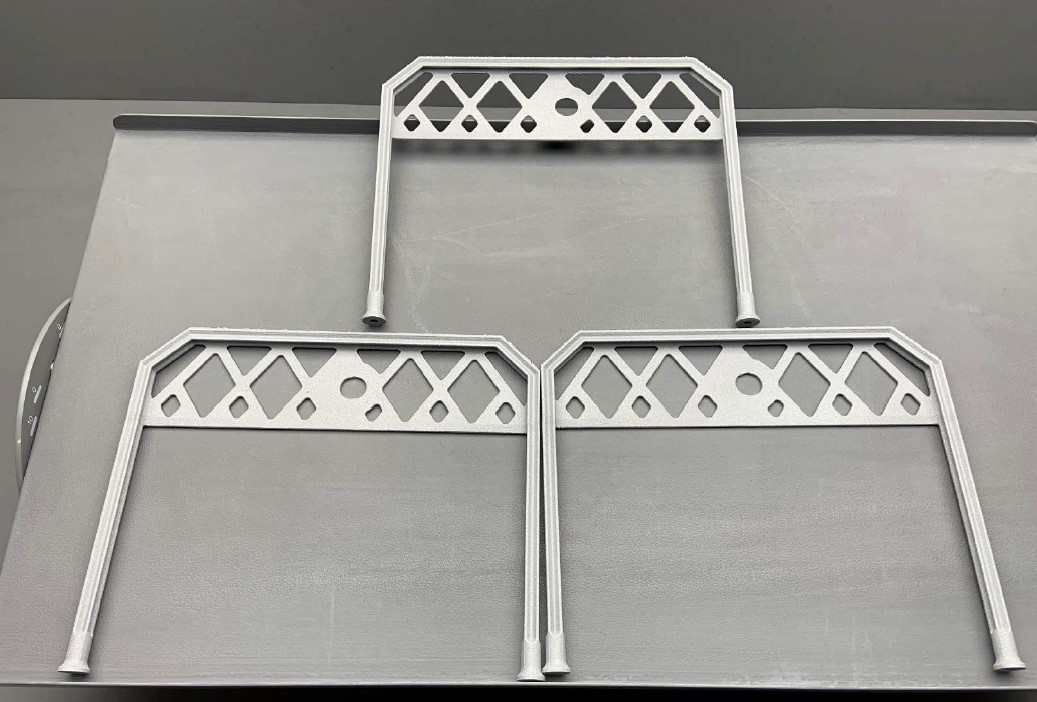
Gardner Aerospace is a leading international manufacturer of aerospace finished components, comprising simple to highly complex and small to very large machined and sheet metal fabricated detailed parts, with substantial speed shop, assembly and kitting capabilities. The company has an impressive history of using polymer additive manufacture (AM) for jigs and fixtures to support production of a wide range of different components. The recent acquisition of Burnley-based FDM Digital Solutions Limited, a leading polymer AM provider, has provided Gardner with the perfect opportunity to expand its technical knowledge, R&D capability and product offering, and aligns well with a growing customer expectation for innovative solutions. Although developing its AM portfolio to include metal parts was firmly on the company radar, the opportunities for doing so on make-to-print orders were few and far between, and were largely confined to development parts where some design flexibility may be admissible. Furthermore, without the possibility of making the sorts of changes which benefit AM, such as increasing part complexity and combining functions, Gardner recognised that the like-for-like replacement of subtractively manufactured parts with AM parts might rarely be cost-effective. The DRAMA programme offered Gardner the tantalising prospect of being able to gain some insight into metal AM as an off-line exercise, with the chance of then being able to engage with customer engineers and influence future component design in favour of AM.
Engineers from the National Centre for Additive Manufacturing (NCAM) visited Gardner’s Derby facility to launch a Product Suitability Support Package, which began with an assessment of the current product portfolio. One family of components in particular stood out as being perhaps overdue for a re-think in terms of manufacture, and this was wiring harness support frames. These fabricated tubular aluminium components, which are tailor-made to carry aircraft fuselage wiring harnesses, come in a huge variety of shapes, sizes and configurations. The current manufacturing process requires highly skilled manual labour, and necessitates the welding together of tubes, flanges and brackets, using complex jigs to facilitate the correct spatial positioning and orientation. Although there are many different designs, the annual deliveries of any particular frame are generally low.
This paved the way for a second Process Selection support package, during which NCAM engineers, working closely with Gardner, used a structured process to down-select the most suitable metal AM process, based on Gardner-specific component specifications and commercial drivers. Laser Powder Bed Fusion (PBF-LB) was highlighted as the most suitable AM process. It was concluded that, for the larger frames such as Frame A opposite, it would be necessary to build in separate, interlocking sections due to build platform size constraints, and this would not be economically viable. Indeed, for smaller frames such as Frame B, the business case was not attractive. However, given Gardner’s wish to acquire more knowledge about metal AM, Frame B was used as a test case.
The selected frame presented a number of opportunities for design optimisation to facilitate building and also to reduce weight. The circular tube cross-section was replaced by a cruciform section to prevent powder entrapment.
The work carried out in DRAMA will help inform future discussions between Gardner and its customer, and it is possible that in the future, more conformable support frames having even more complex configurations will provide greater opportunities for an AM approach to manufacture.
"The work done under the DRAMA Programme has provided us with a greater understanding of metal AM, which we see as a natural progression from our polymer AM capability. The logical approach will help us in assessing the potential for using metal AM on new parts and in selecting the most appropriate metal AM technology."
Jordan Lyons, Engineering Team Leader, Gardner Aerospace

Finished support frames